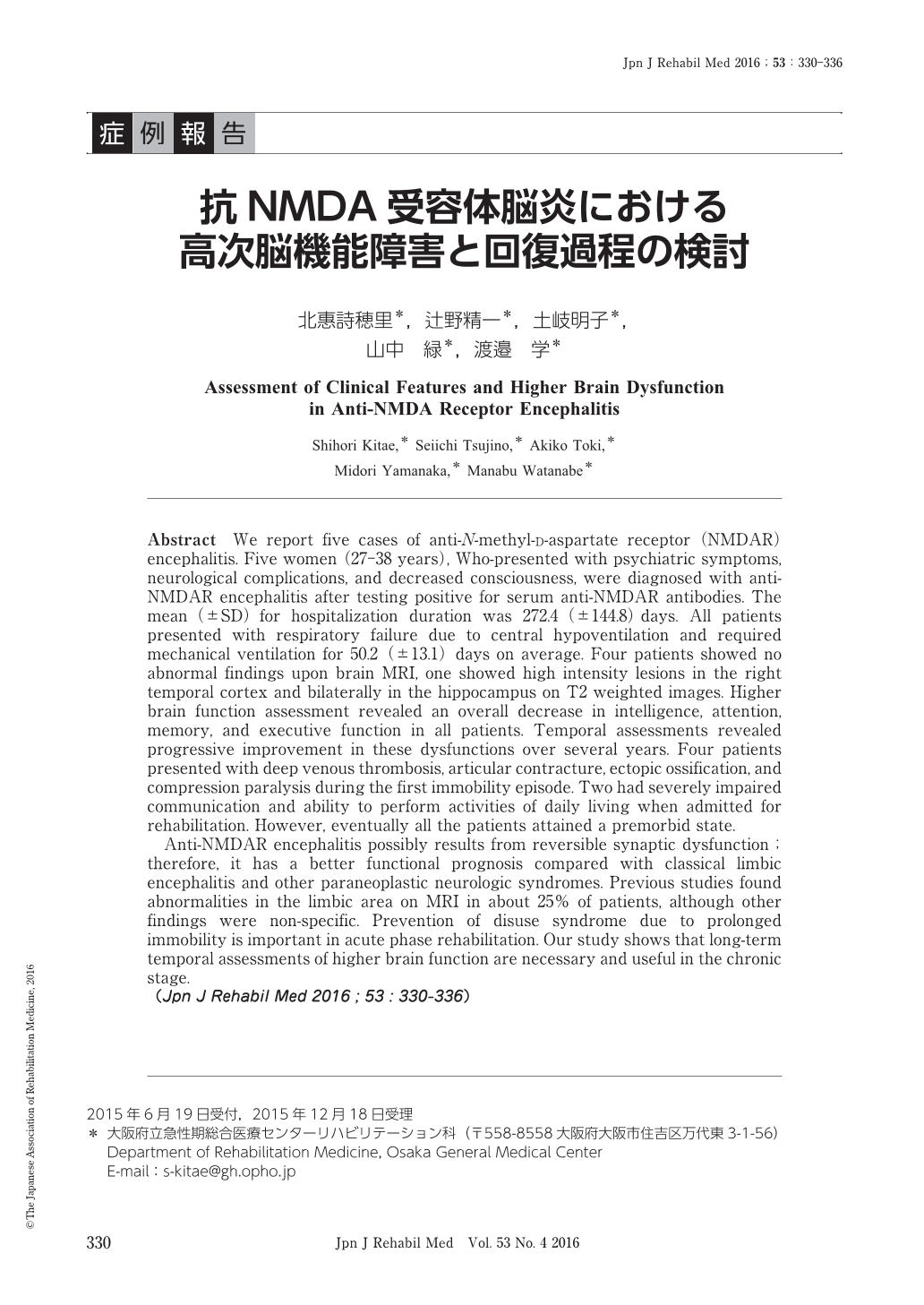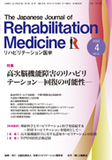Japanese
English
- 販売していません
- Abstract 文献概要
- 1ページ目 Look Inside
- 参考文献 Reference
はじめに
卵巣奇形腫に基づく傍腫瘍性辺縁系脳炎は,抗N-methyl-D-aspartate受容体(以下,NMDAR)抗体との関連が報告されており,他の傍腫瘍性神経症候群と比べて比較的良好な生命予後や機能予後が特徴とされている1).リハビリテーション(以下,リハ)の領域でも近年その臨床像の報告を散見するが,いまだ疾患概念が十分に浸透しているとは言いがたい.抗NMDAR脳炎における特徴的な回復過程について,高次脳機能評価を中心に,当科で経験した5症例の検討を行ったので,文献的考察を加えて報告する.
We report five cases of anti-N-methyl-D-aspartate receptor (NMDAR) encephalitis. Five women (27-38 years), Who-presented with psychiatric symptoms, neurological complications, and decreased consciousness, were diagnosed with anti-NMDAR encephalitis after testing positive for serum anti-NMDAR antibodies. The mean (±SD) for hospitalization duration was 272.4 (±144.8) days. All patients presented with respiratory failure due to central hypoventilation and required mechanical ventilation for 50.2 (±13.1) days on average. Four patients showed no abnormal findings upon brain MRI, one showed high intensity lesions in the right temporal cortex and bilaterally in the hippocampus on T2 weighted images. Higher brain function assessment revealed an overall decrease in intelligence, attention, memory, and executive function in all patients. Temporal assessments revealed progressive improvement in these dysfunctions over several years. Four patients presented with deep venous thrombosis, articular contracture, ectopic ossification, and compression paralysis during the first immobility episode. Two had severely impaired communication and ability to perform activities of daily living when admitted for rehabilitation. However, eventually all the patients attained a premorbid state.
Anti-NMDAR encephalitis possibly results from reversible synaptic dysfunction;therefore, it has a better functional prognosis compared with classical limbic encephalitis and other paraneoplastic neurologic syndromes. Previous studies found abnormalities in the limbic area on MRI in about 25% of patients, although other findings were non-specific. Prevention of disuse syndrome due to prolonged immobility is important in acute phase rehabilitation. Our study shows that long-term temporal assessments of higher brain function are necessary and useful in the chronic stage.

Copyright © 2016, The Japanese Association of Rehabilitation Medicine. All rights reserved.


